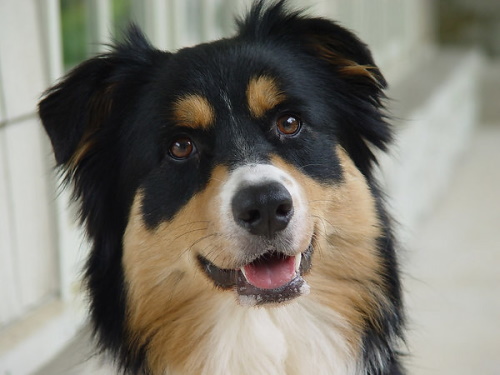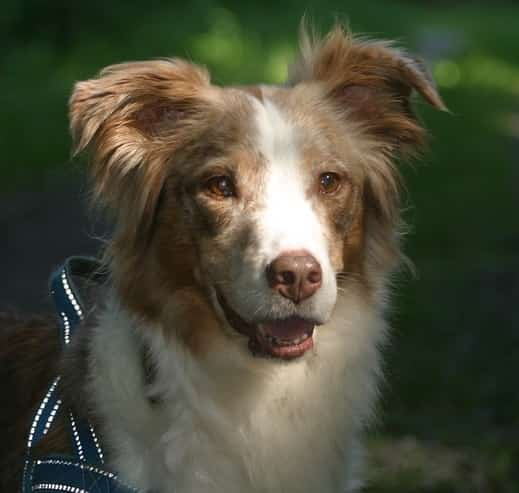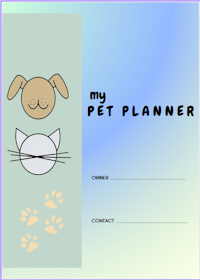Australian Shepherd Dog
He Loves To Do A Job!
Australian Shepherd dogs have no direct connection with Australia. They were developed in America from dogs brought here by Basque sheepherders who migrated to this country in the 1800's.
Affectionately called the Aussie, it is believed that this breed was refined from Pyrenean Shepherd dogs that were cross bred with collie type dogs.
The collies thought to be most likely chosen for the Aussie's development were the Border Collie and the Smithfield Collie. The result is undeniably a very handsome dog.
The breed quickly became very popular, as well as an indispensable part of the work force on farms and ranches, where they utilized their natural herding instincts, amazing stamina and remarkable agility.
In the modern world, their skills are very helpful in therapy situations, as assistance dogs to the handicapped, in search and rescue, and also police work.
 Miss Olive courtesy Flickr
Miss Olive courtesy FlickrPersonality and Traits
Australian Shepherd dogs are loyal, attentive, highly intelligent, and extremely versatile dogs. They make great family companions and like to be involved in everything you do.
The Aussie is eager to please and will housetrain easily. He does, however, need strong leadership or he can become too independent and dominant.
He also can become loyal to one person, so it is desirable that everyone in the family play a part in his training.
Because of his natural herding instincts and high energy, Aussies are workaholics and enjoy being given jobs to do. They will learn these assignments quickly: fetch the paper, the slippers, protect the house, etc.
Being inherently protective, they make excellent watchdogs.
Appearance And Care of the Aussie
Height: 18-23 inches
Weight: 35-70 lbs.
Color variations: Blue merle, red merle, black,
liver, red, with possible markings tan markings evenly distributed.
The Australian Shepherd dog is symmetrical, solid and muscular. He is of medium in size with a length slightly more than their height.
The Aussie's ears are triangular in shape, are set high and have a forward break. Eyes are almond shaped and color is amber, blue or brown, sometimes with flecks.
The blue eyes, which are quite striking, are very light sensitive and are in fact actually albino.
The Australian Shepherd dog has a double coat that is weather resistant, of medium length, moderately rough in texture, and can be straight to wavy.
Grooming and coat maintenance requires thorough and regular brushing to prevents mats and tangles as well as minimize hair around the house from the year-round shedding. During seasonal coat blowing, more grooming attention is needed.
However, the ASD's coat stays pretty clean being quite resistant to adverse weather so doesn't need frequent bathing under normal circumstances.
But, for a dog that likes to run around a lot, the paws should be inspected for any foreign matter or cuts. Nails can be trimmed at the same time. Don't forget to brush his teeth and give the ears a clean to prevent infections.
 Red Merle Australian Shepherd
Red Merle Australian ShepherdAustralian Shepherd Dog Health
An Australian Shepherd dog that receives good care can live up to thirteen years. The main health issues that may affect the breed - as garnered from a survey of owners and the breed club, include:
- Eye disorders such as red eye, epiphora, conjunctivitis, and cataracts.
- Thyroid disease
- Epilepsy
- Respiratory conditions
- Skin allergies
- Hip dysplasia
One thing in particular to be aware of concerns puppies resulting from the breeding of two merled parents.
In these situations, there is a risk
that an
extra copy of the dominant merle gene may get passed along. When this
happens, a puppy so affected can have hearing and vision problems or
even be deaf or blind.
Another genetic disorder related to the breed is the susceptibility of
acquiring a mutated MDR1 gene. When this mutation is present, the
affected dog can have a toxic, even fatal, reaction to certain
medications.
The good news is that a test is available to determine if the pet does have this mutated gene.
Bottom line: prospective owners of the breed are advised to investigate the various screening tests available for the conditions related to the Aussie.
A great health resource for Australian Shepherd dog owners is ASGHI (Australian Shepherd Health & Genetics Institute).
Dog Toys To Consider For The Aussie
For a dog that loves to play and with a lot of high energy, dog toys are a must - lots of them!!
Click on any toy for more details.
Ideal Living Space
The Australian Shepherd dog is not the type to crash on the sofa for a day of kicking back - so apartment living is not the best match for his style. He needs room for action!
Ideally, the ASD needs a securely-fenced yard of considerable size, as well as open space where they can run freely. While they are always active around the house, they love to play outside.
Children and the Australian Shepherd Dog?
Although they have a reputation for loving to be around children, they do best with older children unless they are raised with them from a puppy. This is because their high level of energy could overwhelm a small child.
Providing sufficient exercise is still at the core of sustaining harmony with a family dog such as the Aussie. That, and giving him a job to do!
As with any breed of dog, activities between them and children should always be supervised by an adult.
Seniors Or Less Active Families
While Australian Shepherd dogs are loyal and loving companions as well as being protective, their need for vigorous exercise every day, would generally rule them out for sedentary families.
That being said, they have proven themselves in various services, such as therapy, assistance, search and rescue, detection and more.
Further Reading

Miss Olive license





